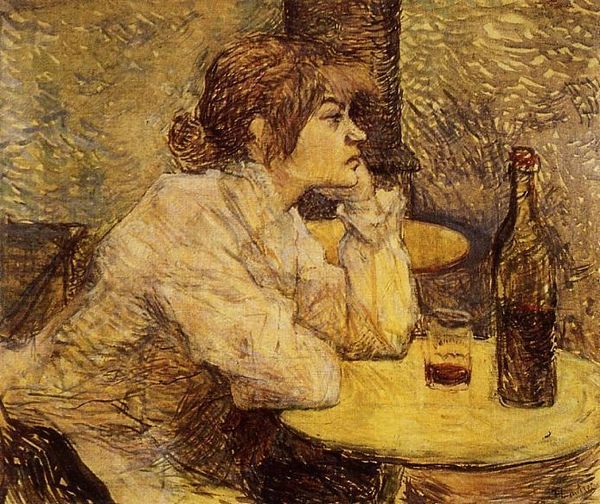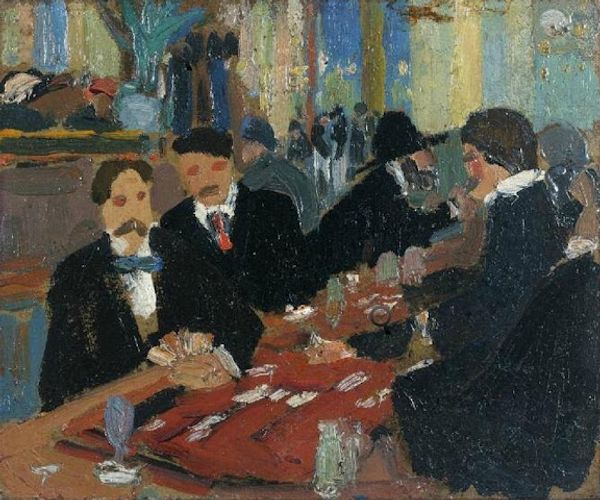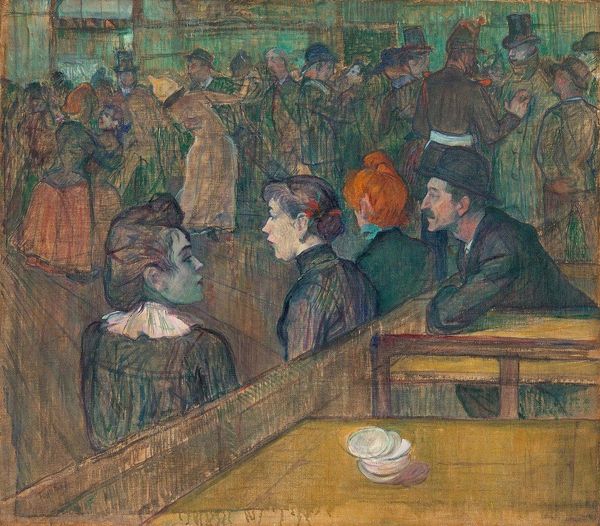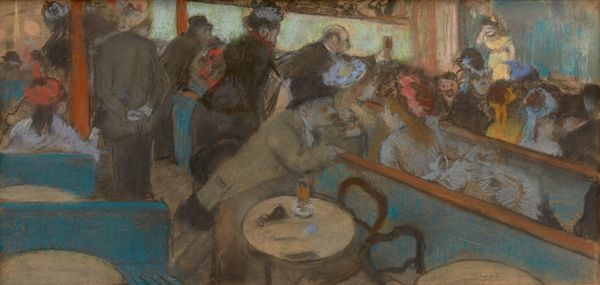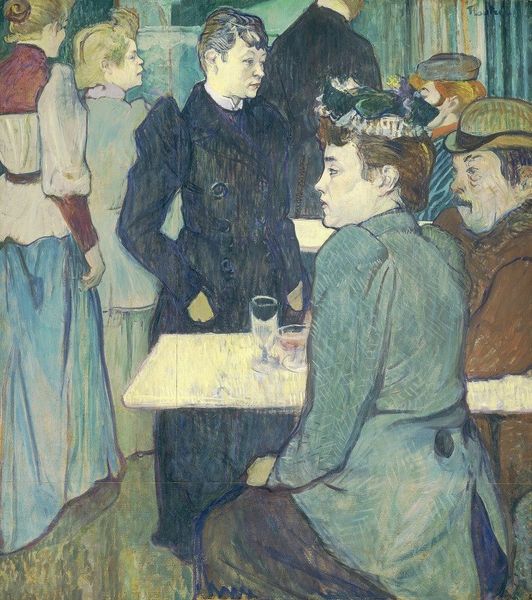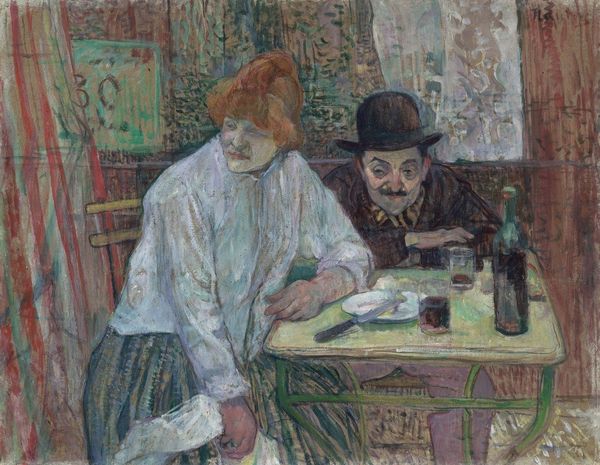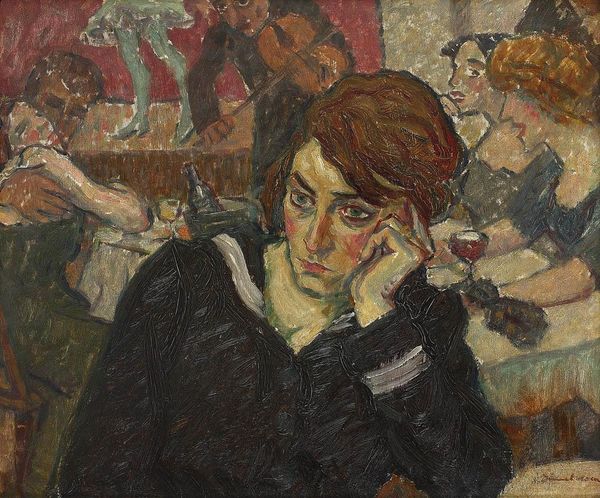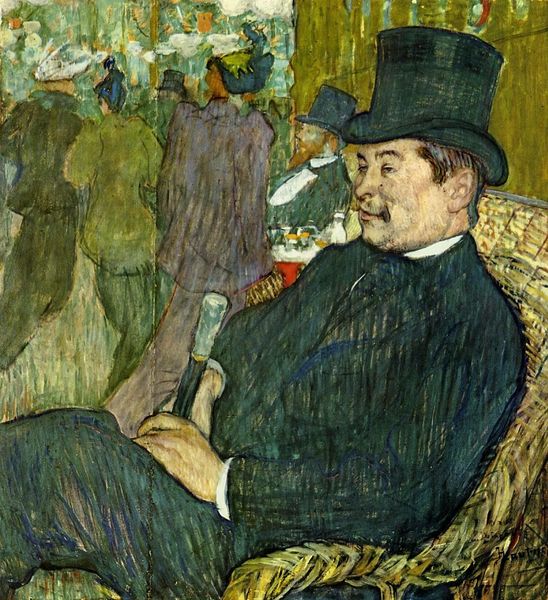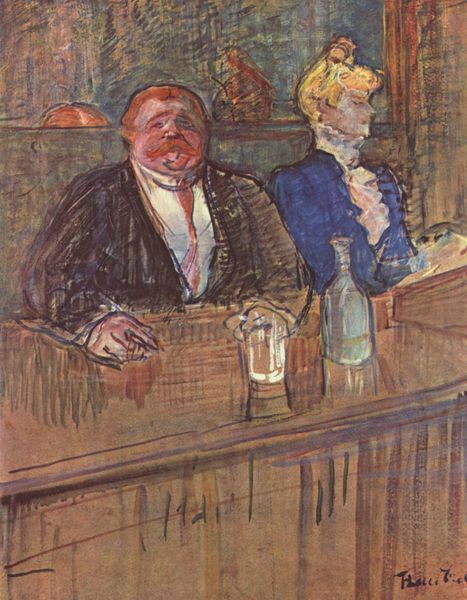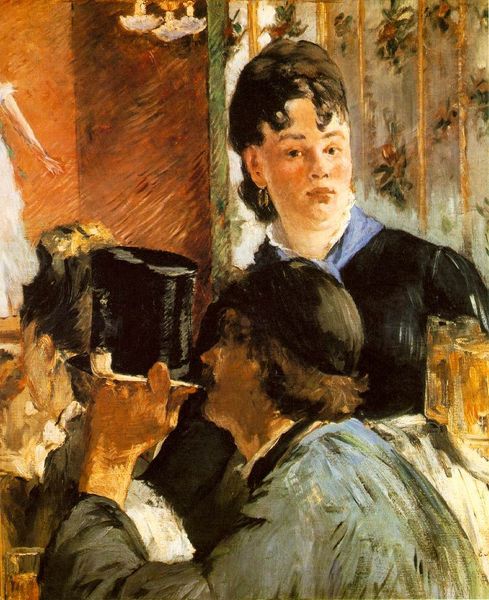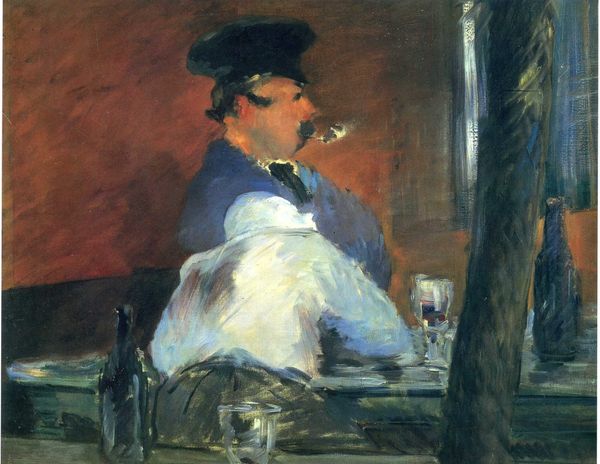
painting, oil-paint, impasto
#
portrait
#
painting
#
oil-paint
#
landscape
#
oil painting
#
impasto
#
cityscape
#
genre-painting
#
post-impressionism
Dimensions: 73 x 92 cm
Copyright: Public domain
Curator: This is Paul Gauguin’s "Night café, Arles," completed in 1888. Gauguin painted this scene during his brief but intense period living with Van Gogh in the south of France. The work is oil on canvas and captures a seemingly mundane moment in a public space. Editor: Mundane perhaps, but it’s steeped in atmosphere! There’s something intensely unsettling about this scene; the lurid red walls seem to press in on the figures, making them feel trapped, isolated even in a crowded room. The color choices feel almost violent. Curator: The cafe was run by Madame Ginoux, who is portrayed prominently in the foreground, and the piece offers a glimpse into the social life of Arles at the time, providing insights into the roles women played in these spaces and how these informal public spheres allowed a unique blending of people and classes. It seems far from incidental that the painting offers Ginoux's perspective, both figuratively and quite literally. Editor: And consider the placement of that billiard table. It creates a clear division in the composition—Ginoux is separate and in her own world from the rest. There's that suggestion of isolation I felt initially, and the heavy impasto lends a tactile sense of discomfort to everything, as though one can almost feel the heat of the scene and smell stale tobacco. Are these intended suggestions of social hierarchy at play? Curator: Absolutely. And it reflects Gauguin's broader artistic concerns with primal emotions and a kind of 'truth' beneath the surface. Think about the art world at the time; impressionism had broken boundaries and shattered certainties by stepping into a world where nothing was as it seemed and capturing it with scientific realism. Here Gauguin rejects any attempt at the impressionistic scientific capture of the exterior moment, to pursue emotional essence through a deeply personal rendering. Editor: The redness has implications too—it becomes symbolic, doesn’t it? It evokes strong emotion – perhaps anger, lust, danger? By choosing such intense colouration, I think he rejects objectivity completely to instead immerse the viewer in a subjectivity instead, a psychological state, rather than only visual data. Curator: And how he presents the scene challenges traditional art-historical assumptions, giving us agency in assessing whose experience we empathize with—whose world is presented, whose left behind. A fascinating interrogation that opens doors for our contemporary, twenty-first-century dialogue, don't you think? Editor: Absolutely. It allows us to see not just the café, but ourselves as well.
Comments
No comments
Be the first to comment and join the conversation on the ultimate creative platform.
